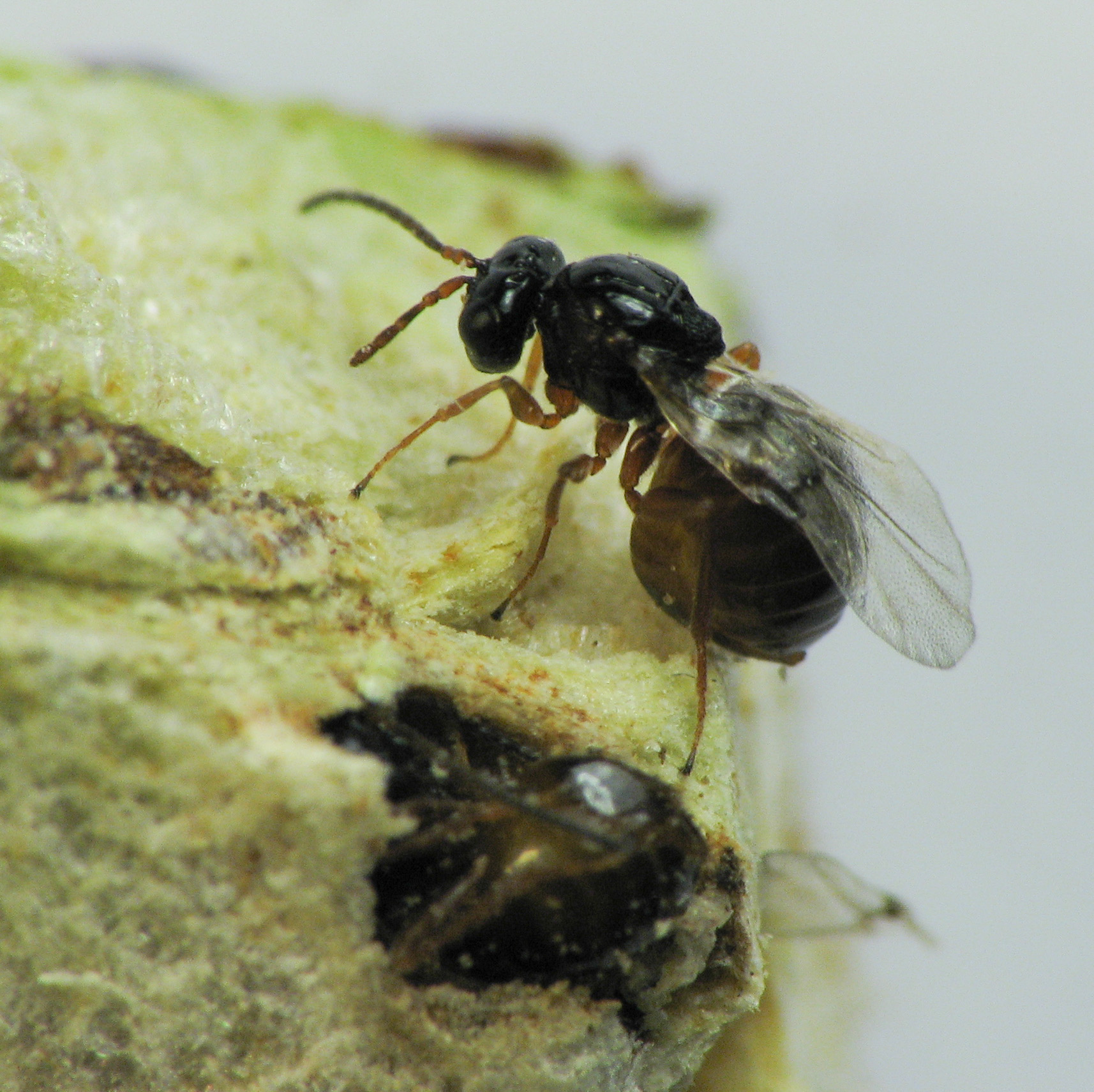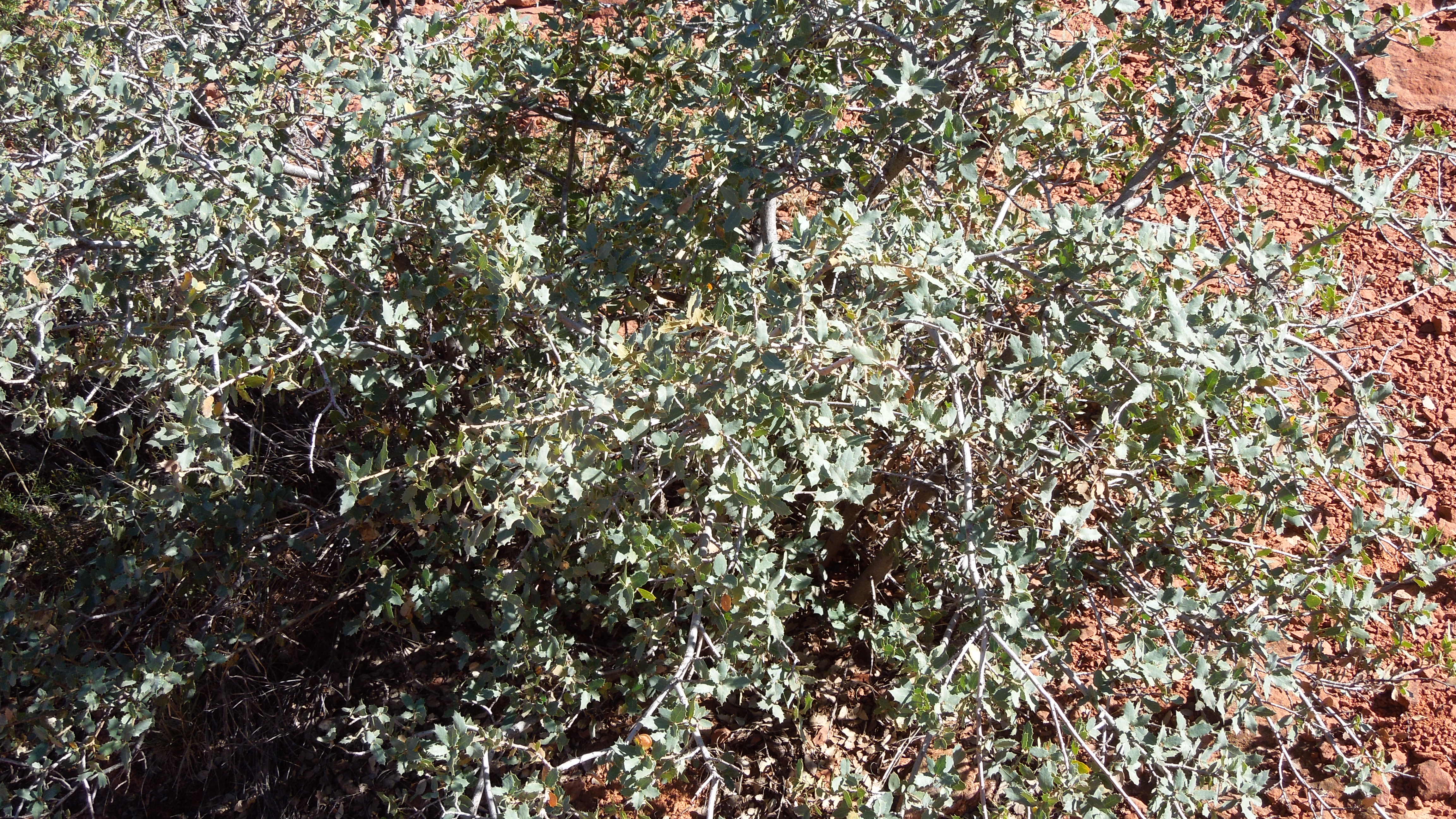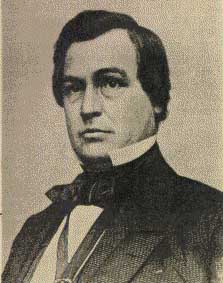|
Atrusca Brevipennata
''Atrusca brevipennata'', formerly ''Andricus pellucidus'', also known as the little oak-apple gall wasp, is a locally common species of cynipid wasp that produces galls on oak trees in North America. The wasp oviposits on shrub live oak and Gambel oak leaves. The larval chamber is at the center of the gall, connected to the husk by slender, radiating fibers. This wasp is most commonly observed in the American Southwest, as far north as Denver. It is visually similar to, and may be confused with, '' Atrusca bella''. ''Atrusca brevipennata'' was first studied and introduced to the scientific community by American biologist and sexologist Alfred Kinsey. See also * Oak apple An oak apple or oak gall is a large, round, vaguely apple-like gall commonly found on many species of oak. Oak apples range in size from in diameter and are caused by chemicals injected by the larva of certain kinds of gall wasp in the famil ... References External links * Cynipidae Gall- ... [...More Info...] [...Related Items...] OR: [Wikipedia] [Google] [Baidu] |
Sandia Foothills Open Space
Sandia may refer to: Places * Sandia, Texas, town in the USA * Sandia, Peru, town in the Puno region of Peru, capital of ** Sandia Province, province in the Puno region * Sandia Mountains, a mountain range near Albuquerque in New Mexico, USA, which gave their name to ** Sandia Heights, New Mexico ** Pueblo of Sandia Village, New Mexico, U.S. census-designated location ** Sandia Mountain Wilderness, in New Mexico, USA ** Sandia High School, high school in Albuquerque, New Mexico ** Sandia Motorsport Park, racing venue in Albuquerque, New Mexico ** Sandia Preparatory School, in Albuquerque, New Mexico ** Sandia View Academy, in Corrales, New Mexico ** Sandia Base, nuclear weapons base ** Sandia National Laboratories, a major United States Department of Energy research and development national laboratory *** Sandia Corporation, a wholly owned subsidiary of Lockheed Martin Corporation, which formerly managed and operated the Sandia National Laboratories ** Sandia Peak Tramway, tram wa ... [...More Info...] [...Related Items...] OR: [Wikipedia] [Google] [Baidu] |
Species
A species () is often defined as the largest group of organisms in which any two individuals of the appropriate sexes or mating types can produce fertile offspring, typically by sexual reproduction. It is the basic unit of Taxonomy (biology), classification and a taxonomic rank of an organism, as well as a unit of biodiversity. Other ways of defining species include their karyotype, DNA sequence, morphology (biology), morphology, behaviour, or ecological niche. In addition, palaeontologists use the concept of the chronospecies since fossil reproduction cannot be examined. The most recent rigorous estimate for the total number of species of eukaryotes is between 8 and 8.7 million. About 14% of these had been described by 2011. All species (except viruses) are given a binomial nomenclature, two-part name, a "binomen". The first part of a binomen is the name of a genus to which the species belongs. The second part is called the specific name (zoology), specific name or the specific ... [...More Info...] [...Related Items...] OR: [Wikipedia] [Google] [Baidu] |
Cynipid Wasp
Gall wasps, also traditionally called gallflies, are hymenopterans of the family Cynipidae in the wasp superfamily Cynipoidea. Their common name comes from the galls they induce on plants for larval development. About 1,300 species of this generally very small creature () are known worldwide, with about 360 species of 36 different genera in Europe and some 800 species in North America. Features Like all Apocrita, gall wasps have a distinctive body shape, the so-called wasp waist. The first abdominal tergum (the propodeum) is conjoined with the thorax, while the second abdominal segment forms a sort of shaft, the petiole. The petiole connects with the gaster, which is the functional abdomen in apocritan wasps, starting with the third abdominal segment proper. Together, the petiole and the gaster form the metasoma, while the thorax and the propodeum make up the mesosoma. The antennae are straight and consist of two or three segments. In many varieties, the backside of the mes ... [...More Info...] [...Related Items...] OR: [Wikipedia] [Google] [Baidu] |
Galls
Galls (from the Latin , 'oak-apple') or ''cecidia'' (from the Greek , anything gushing out) are a kind of swelling growth on the external tissues of plants. Plant galls are abnormal outgrowths of plant tissues, similar to benign tumors or warts in animals. They can be caused by various parasites, from viruses, fungi and bacteria, to other plants, insects and mites. Plant galls can be such highly organized structures that their cause can be determined without the actual agent being identified. This applies particularly to insect and mite plant galls. The study of plant galls is known as cecidology. Anatomy Shape and size Galls develop on various plant organs, providing nutrition and shelter to inducing insects. Galls display vast variation in morphology, size, and wall composition. The size of insect galls can range significantly, from approximately two inches in diameter to less than one-sixteenth of an inch. Some galls are so small that they are merely slightly thickene ... [...More Info...] [...Related Items...] OR: [Wikipedia] [Google] [Baidu] |
Quercus Turbinella
''Quercus turbinella'' is a North American species of oak known by the common names shrub oak, turbinella oak, shrub live oak, and gray oak. It is native to Arizona, California, New Mexico, Utah, Colorado, and Nevada in the western United States. It also occurs in northern Mexico.Virginia Tech: Shrub live oak 
Description ''Quercus turbinella'' is a growing in height but sometimes becoming treelike and exceedi ...[...More Info...] [...Related Items...] OR: [Wikipedia] [Google] [Baidu] |
Gambel Oak
''Quercus gambelii'', with the common name Gambel oak, is a deciduous small tree or large shrub that is widespread in the foothills and lower mountains of western North America. It is also regionally called scrub oak, oak brush, and white oak. The common and scientific names, Gambel oak and ''Quercus gambelii'', were named after the American naturalist William Gambel (1821–1849). Description ''Quercus gambelii'' trees differ in size from one location to another. The average mature height is from , but occasionally reaches heights of in some locations. Dwarf stands of plants under tall are common in marginal areas where heavy browsing occurs. The largest trees are found along streams in the southern part of its range, and can reach up to 100 feet tall. The champion tree is in Arizona at tall. Although the wood is hard and dense, its branches are irregular and crooked, making them flexible enough to bend without breaking when covered with heavy snow. The bark is rough ... [...More Info...] [...Related Items...] OR: [Wikipedia] [Google] [Baidu] |
Southwestern United States
The Southwestern United States, also known as the American Southwest or simply the Southwest, is a geographic and cultural list of regions of the United States, region of the United States that includes Arizona and New Mexico, along with adjacent portions of California, Colorado, Nevada, Oklahoma, Texas, and Utah. The largest cities by List of metropolitan statistical areas, metropolitan area are Phoenix, Arizona, Phoenix, Las Vegas, El Paso, Texas, El Paso, Albuquerque, and Tucson, Arizona, Tucson. Before 1848, in the historical region of Santa Fe de Nuevo México as well as parts of Alta California and Coahuila y Tejas, settlement was almost non-existent outside of New Mexico's pueblos and Santa Fe de Nuevo México#Regions and municipalities, Spanish or Mexican municipalities. Much of the area had been a part of New Spain and Mexico until the United States acquired the area through the Treaty of Guadalupe Hidalgo in 1848 and the smaller Gadsden Purchase in 1854. While the regio ... [...More Info...] [...Related Items...] OR: [Wikipedia] [Google] [Baidu] |
Denver
Denver ( ) is a List of municipalities in Colorado#Consolidated city and county, consolidated city and county, the List of capitals in the United States, capital and List of municipalities in Colorado, most populous city of the U.S. state of Colorado. It is located in the Western United States, in the South Platte River, South Platte River Valley on the western edge of the High Plains (United States), High Plains east of the Front Range of the Rocky Mountains. With a population of 715,522 as of the 2020 United States census, 2020 census, a 19.22% increase since 2010 United States census, 2010, Denver is the List of United States cities by population, 19th most populous city in the United States and the fifth most populous state capital. Denver is the principal city of the Denver metropolitan area, Denver Metropolitan area (which includes over 3 million people), as well as the economic and cultural center of the broader Front Range Urban Corridor, Front Range, home to more than ... [...More Info...] [...Related Items...] OR: [Wikipedia] [Google] [Baidu] |
Atrusca Bella
''Atrusca bella'', also known as the little oak-apple gall wasp, is a locally common species of cynipid wasp that produces galls on oak trees in North America. The wasp oviposits on Arizona white oak, Mexican blue oak, netleaf oak, Toumey oak, and shrub live oak. The larval chamber is at the center of the gall, connected to the husk by slender, radiating fibers. The gall induced by this wasp is larger, lighter-colored, and more common than the similar gall induced by ''Atrusca brevipennata''. This wasp has been observed in Arizona and New Mexico. See also * Oak apple An oak apple or oak gall is a large, round, vaguely apple-like gall commonly found on many species of oak. Oak apples range in size from in diameter and are caused by chemicals injected by the larva of certain kinds of gall wasp in the famil ... References External links * Cynipidae Gall-inducing insects Insects of the United States Oak galls Insects described in 1920 {{Apocrita-stu ... [...More Info...] [...Related Items...] OR: [Wikipedia] [Google] [Baidu] |
Alfred Kinsey
Alfred Charles Kinsey (; June 23, 1894 – August 25, 1956) was an American sexologist, biologist, and professor of entomology and zoology who, in 1947, founded the Institute for Sex Research at Indiana University, now known as the Kinsey Institute for Research in Sex, Gender, and Reproduction. He is best known for writing ''Sexual Behavior in the Human Male'' (1948) and ''Sexual Behavior in the Human Female'' (1953), also known as the Kinsey Reports, as well as for the Kinsey scale. Kinsey's research on human sexuality, foundational to the field of sexology, provoked controversy in the 1940s and 1950s, and has continued to provoke controversy decades after his death. His work has influenced social and cultural values in the United States as well as internationally. Early life and education Alfred Kinsey was born on June 23, 1894, in Hoboken, New Jersey, the son of Sarah Ann ( Charles) and Alfred Seguine Kinsey. He was the eldest of three children. His mother received little f ... [...More Info...] [...Related Items...] OR: [Wikipedia] [Google] [Baidu] |
Oak Apple
An oak apple or oak gall is a large, round, vaguely apple-like gall commonly found on many species of oak. Oak apples range in size from in diameter and are caused by chemicals injected by the larva of certain kinds of gall wasp in the family Cynipidae. Formation The adult female wasp lays single eggs in developing leaf buds. The wasp larvae feed on the gall tissue resulting from their secretions, which modify the oak bud into the gall, a structure that protects the developing larvae until they undergo metamorphosis into adults. Some common oak-apple-forming species are the '' Biorhiza pallida'' gall wasp in Europe, '' Amphibolips confluenta'' in eastern North America, and '' Atrusca bella'' in western North America. Oak apples may be brownish, yellowish, greenish, pinkish, or reddish. Other galls Considerable confusion exists in the general literature between the oak apple and the oak marble gall. The oak marble is frequently called the oak apple due to the superfici ... [...More Info...] [...Related Items...] OR: [Wikipedia] [Google] [Baidu] |
Cynipidae
Gall wasps, also wikt:gallfly#Usage notes, traditionally called gallflies, are hymenopterans of the family Cynipidae in the wasp superfamily Cynipoidea. Their common name comes from the galls they induce on plants for larval development. About 1,300 species of this generally very small creature () are known worldwide, with about 360 species of 36 different genera in Europe and some 800 species in North America. Features Like all Apocrita, gall wasps have a distinctive body shape, the so-called Petiole (insect anatomy), wasp waist. The first abdominal tergum (the propodeum) is conjoined with the Thorax (insect anatomy), thorax, while the second abdominal segment forms a sort of shaft, the Petiole (insect anatomy), petiole. The petiole connects with the gaster (insect anatomy), gaster, which is the functional abdomen in apocritan wasps, starting with the third abdominal segment proper. Together, the petiole and the gaster form the metasoma, while the thorax and the propodeum mak ... [...More Info...] [...Related Items...] OR: [Wikipedia] [Google] [Baidu] |







